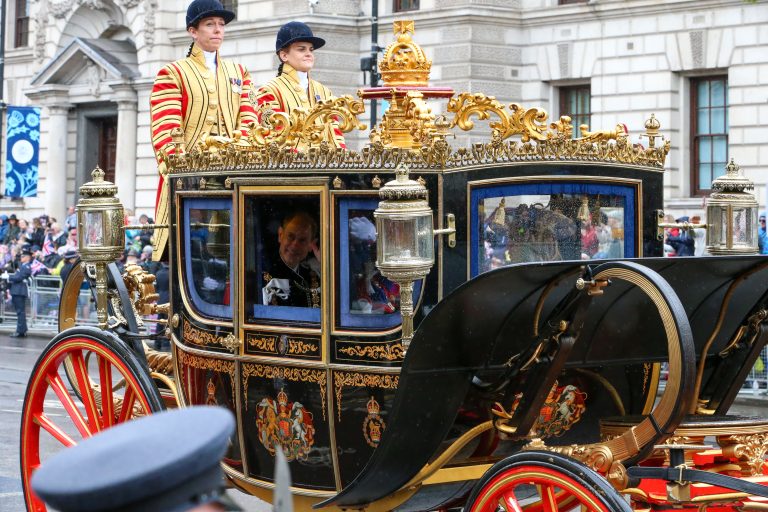
In the quiet fields of Kilteasheen, County Roscommon, Ireland, a chilling archaeological discovery has rewritten our understanding of early medieval beliefs.
Between 2005 and 2009, a team led by Chris Read from the Institute of Technology Sligo and Thomas Finan from Saint Louis University unearthed 137 skeletons at an ecclesiastical site, with an estimated 3,000 more still buried.
While searching for a 13th-century Gaelic palace, they stumbled upon two skeletons treated with shocking violence—large rocks shoved into their mouths, limbs broken, and bodies contorted around boulders.
Carbon dating placed these burials in the 7th or 8th century, revealing a belief in the undead long before the modern vampire mythos emerged.
This 2000-word blog explores the vampire skeletons Ireland phenomenon, delving into the Kilteasheen archaeological excavation, Irish vampire mythology, and the haunting Abhartach legend.
A Glimpse into Early Medieval Ireland’s Dark Fears
The Kilteasheen archaeological excavation revealed a graveyard used from the 7th to the 15th century, offering a window into early medieval Ireland. Most burials followed Christian traditions, with bodies laid east-to-west. However, two male skeletons—one aged 40–60, the other 20–30—stood out.
These “deviant burials” were placed outside the graveyard’s perimeter, their mouths stuffed with rocks so forcefully that one jaw was dislocated, and their bodies wrapped around boulders with broken limbs.
Initially, archaeologists suspected these were Black Death burials to prevent disease spread, but radiocarbon dating to 600–800 CE ruled this out, as the Black Death arrived centuries later.
Instead, these gruesome measures suggest the community feared these men would rise as revenants—walking dead. This discovery challenges the notion of Ireland’s “golden age” as peaceful, revealing a darker, superstition-driven society. The Abhartach legend, a tale of a blood-drinking chieftain from County Derry, echoes these fears, hinting at a deep-rooted belief in the undead.
FAQs About Vampire Skeletons Ireland

What Were the Kilteasheen Vampire Skeletons?
The vampire skeletons Ireland refer to two male skeletons uncovered during the Kilteasheen archaeological excavation in County Roscommon. Dated to the 7th or 8th century, these skeletons were subjected to deviant burials: large rocks were forced into their mouths, their limbs were broken, and their bodies were contorted around boulders.
Unlike typical Christian burials, they were placed outside the graveyard’s perimeter, suggesting the community feared they would return as revenants.
Chris Read, lead archaeologist, noted that one rock was so violently inserted it dislocated the jaw, indicating extreme measures to prevent the dead from rising. These findings, documented in a 2011 Channel 5 documentary, reveal a belief in the undead predating the European vampire craze of the 16th century, aligning with Irish vampire mythology.
Why Were Rocks Placed in the Skeletons’ Mouths?
The rocks in the mouths of the Kilteasheen skeletons were likely a ritual to prevent the deceased from rising as revenants. In early medieval Ireland, communities transitioning from pagan to Christian beliefs held deep-seated fears of the undead. The stones, one the size of a baseball, were thought to block the soul from re-entering the body or to stop the corpse from “chewing” its way out, a common superstition.
This practice mirrors other European deviant burials, like those in Venice, where stones were used to prevent plague-spreading vampires.
The violent treatment—broken limbs and boulder entanglement—further ensured the dead stayed buried. The Abhartach legend, where a chieftain is buried upside-down with a boulder, parallels these rituals, suggesting a cultural fear of the neamh-mairbh (walking dead).
What Does This Tell Us About Early Medieval Ireland?
The Kilteasheen discovery challenges the romanticized view of early medieval Ireland as a peaceful “golden age” post-Christianization. The deviant burials indicate a society gripped by fear of the supernatural, blending Celtic and Christian beliefs.
The skeletons’ violent treatment suggests the deceased were seen as threats—possibly murderers, outsiders, or victims of sudden deaths—feared to return and harm the living.
The site, near Lough Key and the Boyle River, was a significant ecclesiastical center, yet these burials reveal lingering pagan superstitions.
The First Synod of Saint Patrick, a 7th-century text, condemned belief in vampires, confirming such fears were widespread. This darker side of Ireland’s past aligns with stories like the Abhartach legend, highlighting a complex cultural landscape.
Is There a Connection to Irish Vampire Mythology?
Yes, the Kilteasheen skeletons tie directly to Irish vampire mythology, particularly the Abhartach legend. Abhartach, a 5th- or 6th-century chieftain from County Derry, was a tyrant who, after death, rose to demand blood from his subjects.
After multiple failed burials, a hero—possibly Fionn Mac Cumhail or Cathain—killed him with a yew-wood sword, buried him upside-down, and covered the grave with thorns and a boulder, mirroring Kilteasheen’s burial practices. Documented by Patrick Weston Joyce in 1870, this tale suggests a native Irish belief in blood-drinking revenants, predating Eastern European vampire lore.
Some scholars, like Bob Curran, propose Abhartach inspired Bram Stoker’s Dracula, linking Ireland’s folklore to global vampire myths.
Did the Abhartach Legend Inspire Bram Stoker’s Dracula?
The Abhartach legend is a compelling candidate for inspiring Bram Stoker’s Dracula. Stoker, born in Dublin in 1847, was immersed in Irish literary circles and likely knew of Abhartach through figures like Lady Wilde.
The legend’s elements—blood-drinking, multiple deaths, and specific burial rituals—mirror Dracula’s undead nature. Unlike Vlad the Impaler, often cited as Dracula’s inspiration, Abhartach’s story aligns closely with Stoker’s vampire archetype.
The Slaghtaverty Dolmen, known as “The Giant’s Grave,” is said to be Abhartach’s resting place, adding a tangible link to Ireland’s vampire lore. While not definitive, the parallels suggest Stoker drew from Irish vampire mythology.
How Do These Burials Compare to European Vampire Traditions?
The Kilteasheen vampire skeletons Ireland share similarities with European deviant burials, like those in Venice and Serbia. In 1725, Serbian villager Peter Blagojevic was staked after his body showed no decomposition, attributed to vampirism.
Similarly, Arnold Paole’s 1726 case in Medveda involved staking and burning due to perceived blood-drinking. These cases, popularized by Austrian reports, reflect post-mortem changes mistaken for supernatural signs. Kilteasheen’s earlier burials suggest a native Irish belief in revenants, independent of Balkan influences.
Unlike later vampire lore involving garlic or crucifixes, Kilteasheen’s rituals focused on physical restraint, indicating a unique Celtic-Christian blend. This challenges the notion that vampire beliefs were solely Eastern European.
The Abhartach Legend and Irish Vampire Mythology
The Abhartach legend is a cornerstone of Irish vampire mythology. This 5th-century chieftain, described as a dwarf-like sorcerer, terrorized Glenullin, County Derry.
After falling to his death while spying on his wife, Abhartach returned, demanding blood. Slain multiple times by chieftain Cathain, he was finally subdued with a yew-wood sword, upside-down burial, thorns, and a boulder—rituals echoed in Kilteasheen’s deviant burials.
The Slaghtaverty Dolmen, locally called “The Giant’s Grave,” is linked to this tale, reinforcing its cultural significance. Unlike Eastern European vampires, Abhartach’s story lacks garlic or crucifix motifs, suggesting a distinct Irish tradition. Its influence may extend to modern media, like the 2021 film *Boys from County Hell*, which portrays Abhartach as a blood-draining entity.
Challenging Ireland’s “Golden Age” Narrative
The Kilteasheen findings disrupt the view of early medieval Ireland as a serene era. The violent burials indicate a society grappling with fear of the undead, possibly triggered by Christianity’s clash with pagan beliefs.
The First Synod of Saint Patrick’s reference to vampire beliefs suggests these fears were widespread, requiring ecclesiastical condemnation.
The skeletons’ treatment—reserved for societal outsiders or violent individuals—reflects community anxieties about death and retribution. The younger skeleton’s battle scars suggest he was a warrior, possibly feared for his strength. This darker history aligns with archaeological evidence of red deer hunting at Kilteasheen, indicating a complex society with aristocratic practices.
Global Context of Vampire Beliefs

The Kilteasheen vampire skeletons Ireland are not isolated. Similar deviant burials in Britain and continental Europe suggest a widespread fear of revenants in early medieval societies.
In Serbia, cases like Peter Blagojevic and Arnold Paole fueled 18th-century vampire hysteria, driven by misinterpretations of decomposition—like apparent hair growth or fresh blood. Kilteasheen’s earlier burials indicate Ireland had its own undead fears, independent of later Balkan influences.
The absence of Balkan-specific rituals (e.g., garlic) in Kilteasheen suggests a unique Celtic tradition, possibly linked to the neamh-mairbh concept.
These findings highlight how folklore evolves, blending local beliefs with universal fears of death.
Conclusion: Kilteasheen’s Lasting Legacy
The vampire skeletons Ireland unearthed at Kilteasheen reveal a haunting chapter of early medieval Ireland. The violent burials, dated to the 7th–8th century, expose a society gripped by fear of the undead, challenging the “golden age” myth.
The Abhartach legend, with its blood-drinking chieftain and ritualistic burial, mirrors these archaeological findings, suggesting a native Irish vampire mythology that may have inspired Bram Stoker’s Dracula.
The Kilteasheen archaeological excavation not only enriches our understanding of Ireland’s past but also connects to global vampire lore, showing how fear transcends borders.





